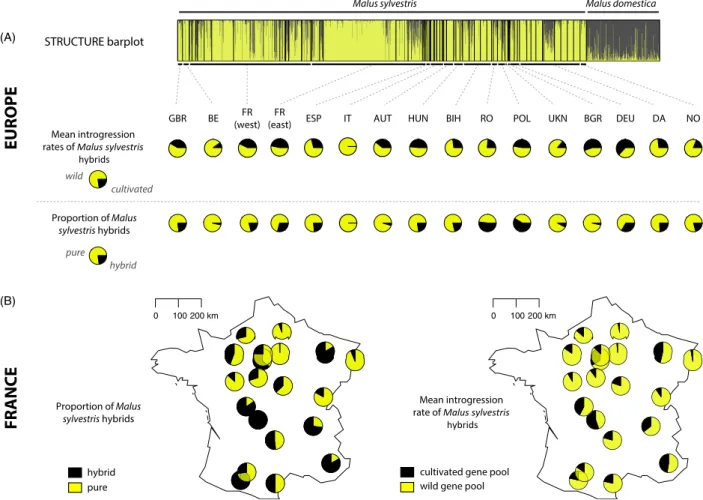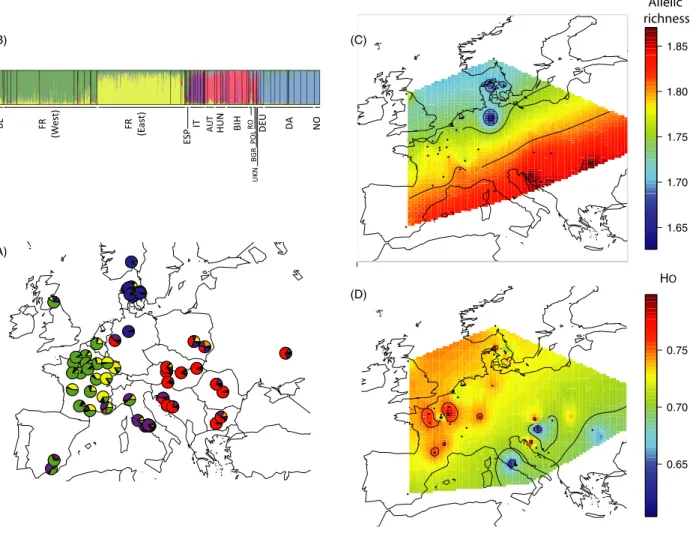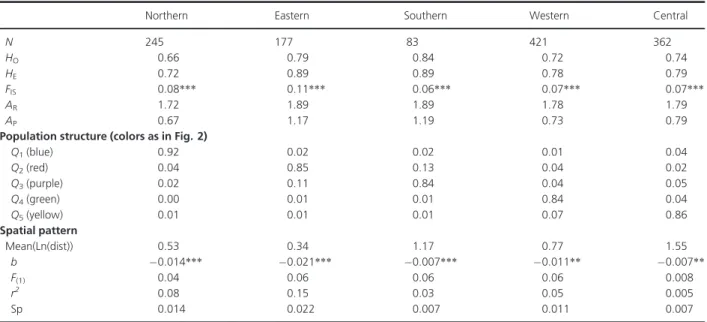Anthropogenic and natural drivers of gene flow in a temperate wild fruit tree: a basis for conservation and breeding programs in apples
Texte intégral
Figure




Documents relatifs
The analysis of a large and representative set of Malus x domestica genotypes indicated that apple germplasm diversity reflects its origination within three main geographic regions
We show here that the genetic structure within the cultivated apple genepool is very weak, with poor differentiation between cider and dessert apples. Cider cultivars thus appear to
Geographic representation of the 10 sampled populations of Nile tilapia within the natural distribution range of the species shaded area and summary of the genetic
This allowed the synteny analysis of the A and B genomes, the comparison with diploid and tetraploid maps and the analysis of the introgression segments from the most probable
THE ROLE OF WILD HOSTS (WILD PIGS AND TICKS) IN THE EPIDEMIOLOGY OF AFRICAN SWINE FE VER IN WEST.. AFRICA
In addition, we found no evidence of any 373 codons under selection in TLR7, compared to three and nine sites in TLR4 and TLR5, respectively, 374 similar to the pattern of
Studies of two survivor populations of honeybees in Sweden and France have revealed that in both populations, the mite reproductive success (i.e., the proportion of
:سداسلا لصفلا روّطتلاو عونتلا ينب ةيكلفلا تاراكتبلااو ةعانصلا .ةيضرلأا تاعفترلماو داعبلأا ضعب ابه ينعت 1 ّنأو ،اضيأ ههجو ىلع اهعضو نكيم نكلو بلارطسلأا رهظ